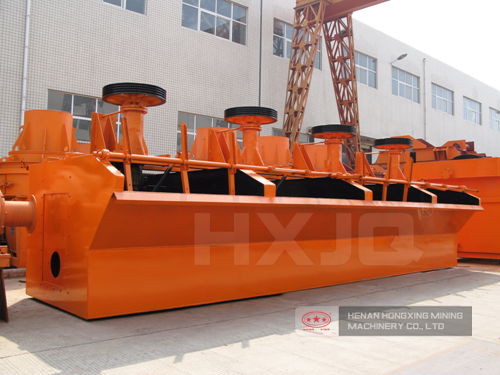
Pulp mass fraction is an important process factor that affects the flotation operation. It has the impact on the following aspects of the flotation concentrator.

(1) Recovery rate. Within a certain range, when the mass fraction of pulp is low, the recovery rate is low; when the pulp mass fraction increases, the recovery rate will be increased correspondingly. However, the mass fraction of the pulp should not be too large, if it is excessively large, it is difficult for the flotation machine to inflate normally, which will reduce the recovery rate.
(2) Concentrate grade. In general, if the pulp is more dilute, the concentrate grade will be high; if the ore pulp is thick, the concentrate grade will be reduced.
(3) The dosage of flotation reagent. In order to obtain better flotation effect, the flotation reagent should maintain a certain mass fraction. When the pulp is thicker, the mass fraction of the flotation reagent should be correspondingly increased, namely, to use fewer flotation reagents can achieve the required mass fraction so that there will be a corresponding reduction in the dosage of the flotation reagent. On the contrary, if the ore pulp is dilute, the operator should increase the amount of flotation reagent.
(4) The flotation of coarse particle. The increase of the pulp mass fraction will make the pulp density increase and cause a corresponding increase in buoyancy, which increases the suspending power of the coarse particles and the collision opportunity between the bubbles and the minerals.
(5) The flotation of fine particles. If the pulp mass fraction increases, it will result in the increase in the slurry viscosity, which will increase the opportunity that the fine-grained minerals and fine-grained gangue bond with each other, reducing the concentrate grade.